- Published 8 Mar 2023
- Last Modified 29 Aug 2023
- 11 min
A Complete Guide to Coaxial Connectors
What are the different types of coaxial connectors and what are their uses? Find out more in our complete guide.

What is a Coaxial Cable?
Coaxial or coax cables are electrical cables created to carry high frequency, multi-megahertz electrical signals. They contain an inner conducting wire, usually copper, surrounded by a protective double insulating layer and then an outer plastic sheath, giving them a distinctive appearance.
Coaxial cables are durable, easy to install, and have a broad range of uses. Their design allows rapid signal transmission (around 10 megabits per second) with minimal electro-magnetic interference or signal loss. Coaxial cables are the default cabling choice for many low voltage consumer electronics.
These include:
- Televisions and telephones
- Mobile phones
- Satellite dishes
- Broadband routers
- Antennas
- Radio equipment
Coaxial cables are available in a variety of types, distinguished by their gauge and impedance. Gauge refers to the thickness of the cable and is given a given a Radio Guide or RG number, with higher numbers indicating thinner conducting cores. Impedance refers to the level of electrical resistance in the wire. Most coaxial cables have an impedance of either 75 or 50 Ohm. The former is primarily used for video signals and the latter for data.
Coaxial cables can come in many sizes, including:
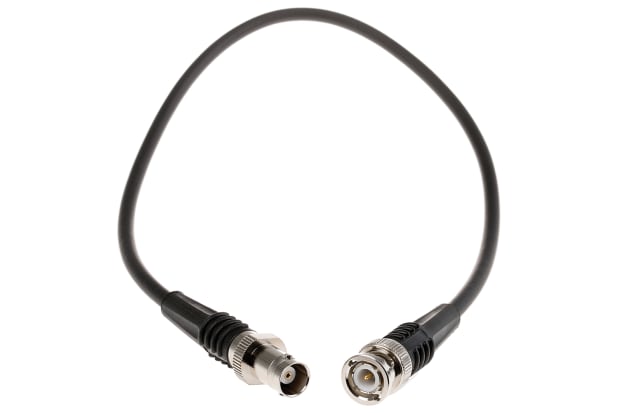
Common Coaxial Cable Sizes
RG-6: As indicated by the low number, these cables have broad central conductors with thick insulation and specialist shielding, which allows a strong signal. However, the cables themselves are thin, making them ideal for installation in ceilings and walls.
RG-11: These cables are relatively thick but as a result, they are more resistant to signal loss. This makes them a good choice for lengthier installations.
RG-59: The RG-59 resembles the RG-6 but, as suggested by the high number, it has a thin central conductor. This makes it best for low frequency transmission over limited distances – for example, in the home.
What is a Coaxial Connector?
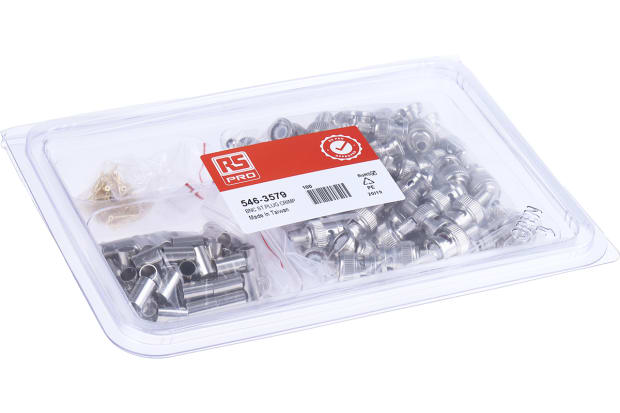
Coaxial connectors, also known as barrel or tip connectors, are used to top and tail the cables and connect devices to external power supplies, or to connect cables to each other, while maintaining the outer interference shielding.
They are available in a multitude of different sizes to suit different cable dimensions, each of which works in combination to ensure smooth transmission of the signal.
Some include switches that allow internal batteries to be disconnected when an external power supply is connected.
Types of Coaxial Connectors
Coaxial cables are used for many different purposes and so the connectors are equally varied. Each type and size is carefully designed to mesh seamlessly with the host cable and function in different, sometimes quite tough conditions. They must resist stressors such as impact, pressure, high temperature and vibration.
Coaxial cables made for radio frequency (RF) transmission require special connectors that provide consistent electrical resistance at the point of connection with connected cables. This means that they are somewhat delicate and can be damaged easily.
The major types of coaxial connector are as follows:

7/16 DIN Connectors
These are tough, threaded connectors primarily used for connecting lengths of coaxial cable within environments which are exposed to moisture. DIN stands for the Deutsches Institut für Normung – the German Standardisation Institute.
Commonly used in:
- Radio base stations
- Broadcasting equipment

BNC Connectors
BNC (Bayonet Neil-Concelman) connectors are a smaller variety of connector used for test instruments, radio, television and other AV equipment.
Designed for:
- Rapid connection
- Rapid disconnection

F Connectors
Also known as F-type connectors, these are commonly used to conduct an electrical signal to TV sets.
Can be paired with:
- RG6 cables
- RG59 cables

FME Connectors
These are miniature threaded connectors. The name itself stands for ‘For Mobile Equipment’.
Most commonly used with:
- Mobile equipment

MBX Connectors
MBX connectors are used to make connections within radio frequency equipment.
Key features:
- Highly robust
- Offer good power handling
- Great electrical performance

MCX Connectors
MCX stands for micro coaxial. These are a smaller connector ideal for use in locations where space is limited. Like many other coaxial connectors, they are designed for easy attachment and removal.
Ideal applications:
- TV tuner card for PCs
- GPS systems
- Wi-Fi routers

MMBX Connectors
Similar to MBX connectors, MMBX connectors provide reliable and flexible connections within radio communications equipment - even if misaligned.
Key features:
- Allows multiple connections between adapters
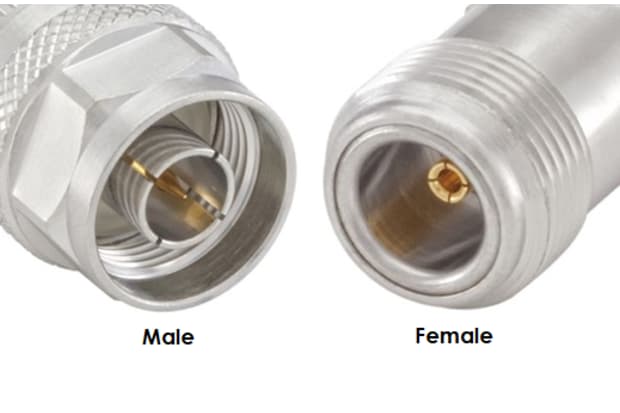
N Connectors
Also known as N-type connectors, these medium-sized adapters boast many features, such as being waterproof. They were named after their inventor, American electrical engineer Paul Neill.
Ideal applications:
- Radio transmission equipment
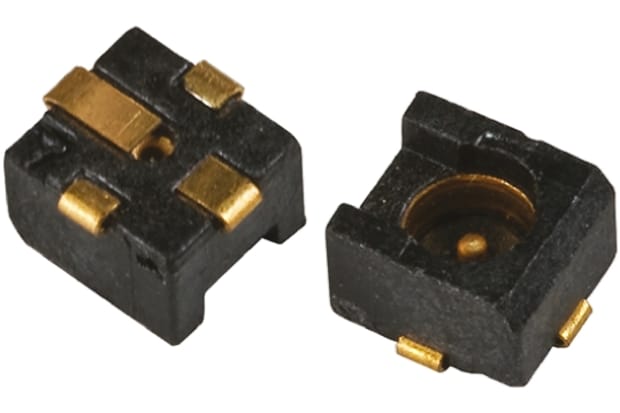
OSMT Connectors
OSMT connectors are typically made from polymer and gold or nickel plating.
Widely used within:
- Telecoms
- GPS devices
- Vehicle and consumer electronics
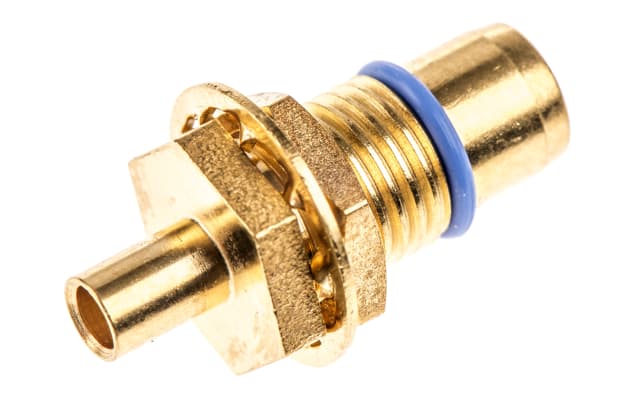
OSP Connectors
These connectors feature a snap-on or slide mechanism for mating.
Uses include:
- Radio equipment

QLI Connectors
These connectors are a variant of DIN 7/16 connectors, making use of the same bayonet locking mechanism and offering similar performance.
Key features:
- Very tough
- Continue performing in harsh environments

QMA Connectors
QMA connectors are a second variant of SMAs – the Q stands for quick, and they are designed for rapid, easy attachment and detachment without a torque spanner. QMA connectors have a robust design and are resistant to vibration, making them ideal for use in outdoor settings.
Ideal applications:
- Radio base stations
- Air traffic control systems
- Transmission equipment
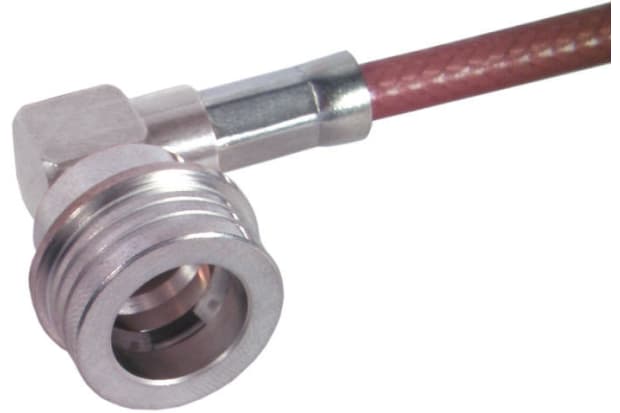
QN Connectors
These are a quick-lock variant of the N-type connector and are compatible with high power cables.
Ideal for:
- Indoor applications
- Outdoor applications
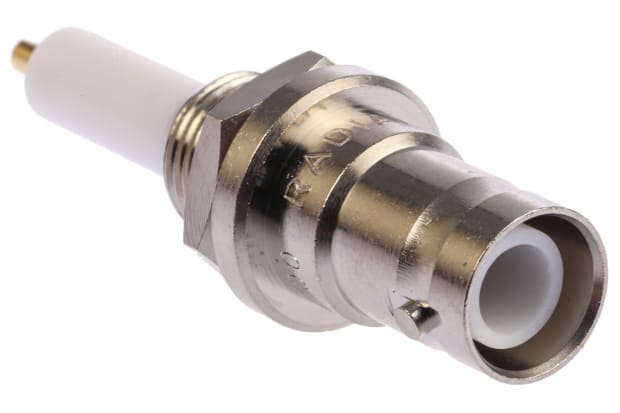
SHV Connectors
Safe High Voltage (SHV) connectors use a bayonet-locking mechanism which is similar to that used in MHV and BNC connectors. They feature a distinctive protruding insulator.
Designed for:
- Safe use with high voltage cables
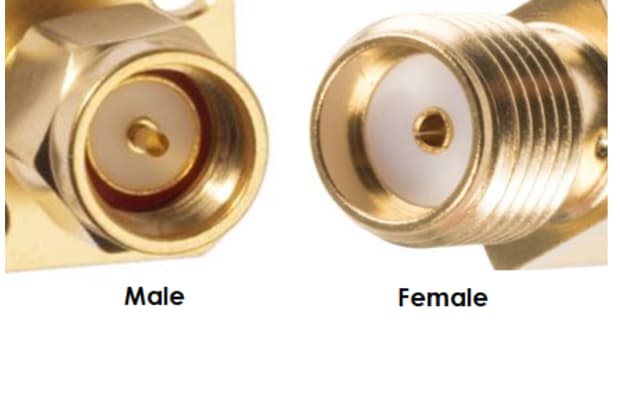
SMA Connectors
SMA (Subminiature Version A) connectors can often be confused with the F coax connector. However, there is a slight (2mm) difference between the two difference types.
Typically used for:
- Walkie talkies
- Handheld radios
- Radio telescopes
- Wi-Fi antennas

SMB Connectors
Similar to the above, Subminiature Version B (SMB) connectors have an easy-to-use design.
Widely used with:
- Telecoms equipment
- Industrial electronics

SMC Connectors
Subminiature Version C (SMC) are a second variation of the SMA connector. They feature a screw-type interface.
Key features:
- Provides air-tight closure against leakage and damage

SMP Connectors
Subminiature push-on (SMP) connectors have a snap-on interface and strong electrical performance. They are a good choice for use in more demanding environments.
Key features:
- Very robust
- Can withstand shock and vibration
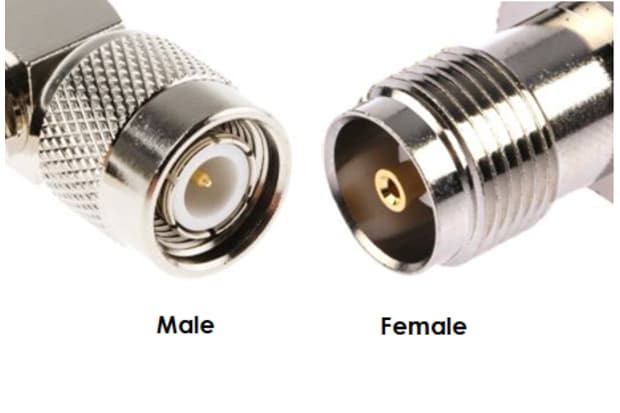
TNC Connectors
TNC (Threaded Neil-Concelman) connectors are a variation of BNC connectors designed for outdoor use.
Common uses:
- Radio antennas
- Mobile phone antennas
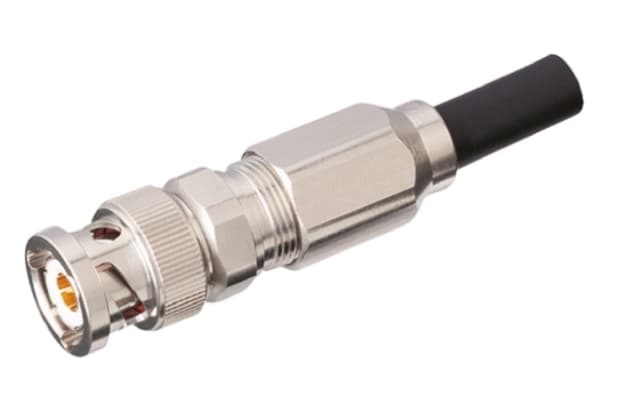
Triax Connectors
These variants of the basic BNC connector are used with triaxial (triax) cables. They provide greater bandwidth but are typically more expensive.
Key features:
- An additional layer of insulation
- An extra conducting sheath
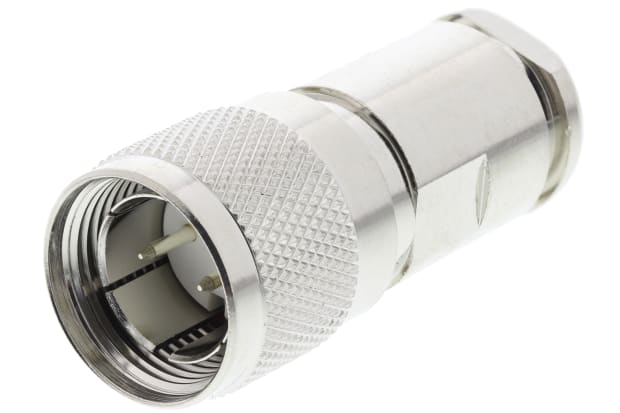
Twinax Connectors
Twinax connectors are a doubled variation of the BNC connector and are used to prevent signals from being mixed. They are also known as Twin BNC connectors.
Key features:
- A latching mechanism
- Crimp connectors for easy installation
- Both male and female contact points

UHF Connectors
UHF stands for Ultra High Frequency, but despite the name, technology has moved on since their invention and they are now primarily used with low frequency devices.
Commonly used as:
- Video connectors for military equipment
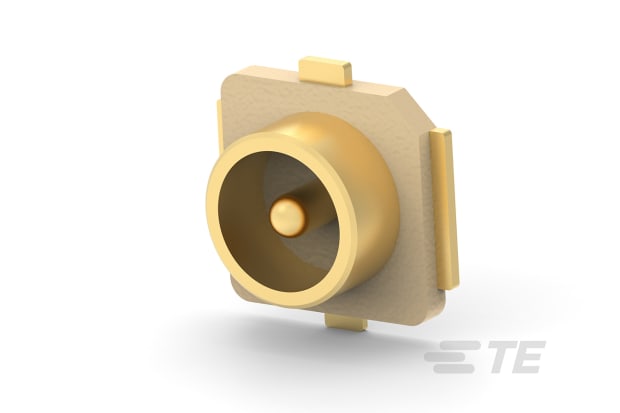
UMCC Connectors
The Ultraminiature Coax connector (UMCC) is used for frequency signals up to 6 GHz in extremely small scale environments – for example, laptop circuit boards and embedded circuitry.
Commonly used to:
- Make connections to GPS
- Connect to Wi-Fi antennas
How to Choose Your Connector
When selecting a coaxial connector, you will need to know the key parameters of the cable you plan to connect. These include:
- The voltage
- The environment
- The required frequency
- Whether a male or female connection is required. Male connectors have protruding metal pins while female connectors have a recess designed to receive the pins
Coaxial Connector Gender Types
In electrical engineering, coaxial and other electrical cables are conventionally divided into two types: male and female. The former typically have a connecting pin or protrusion of some kind that is inserted into indentations or slots in the latter – for example, plugs and sockets (also known as jacks). Connecting a male to a female connector is referred to as ‘mating’ them.
Coaxial cable genders were designed not just to allow physical connections but also to ensure that power or signal data flows in the correct direction, from male to female connectors with matching electrical polarity, preventing interference and unsafe installations. Typically, female connectors are more resistant to damage than male ones so these tend to be placed in crucial areas with males relegated to connecting cables, which can be replaced more easily.
Note that the terms ‘male’ and ‘female’ are not universally used, especially in relation to lower voltage domestic appliances. Widely used electrical standard IEC60320 does not specify gender types for the latter.
Male Coaxial Connectors
Male coaxial connectors typically have a straightforward design, combining a central pin designed to fit a compatible plug on the female connector, alongside a spring-loaded electrical contact point located at the side.
Female Coaxial Connectors
Female coaxial connectors normally feature a metallic tube designed to precisely contain the corresponding male pin, normally called the tip. This is surrounded by an insulating layer and then an outer cylinder, typically referred to as the barrel or sleeve. The latter functions as an electrical contact point, alongside the inner tube.
Genderless Coaxial Connectors
Genderless coaxial connectors combine male protrusion points and female slots in the same connection point, enabling these to be connected to either male or female connectors of matching size and type. They allow cabling within complex installations to be repurposed or reconnected quickly, without awkward removal and repositioning if it needs to be connected to a different component or cable. They have a reverse electrical polarity, with a pin protruding from the female socket and slot in the male plug designed for that pin.
Genderless coaxial connectors are also known as combination connecters. They are not the right choice for installations in which a carefully controlled flow of current in a single direction is required for safety or functionality reasons.
FAQs
How Do You Connect or Change a Coaxial Connector?
Coaxial cables and their corresponding connectors have different uses but the fundamentals of connecting or replacing them remain much the same. Here is how to conduct this procedure:
- Ensure that the cable is removed from any power sources. Electrical shocks and injuries could result from adjusting a live coaxial cable
- If there is already a connector in place, remove it. It may respond to a simple twist or you may need to make use of a tool such as a construction knife or wire strippers
- Prepare the coaxial cable, using a wire stripper or similar device. Make a small incision towards the end of the cable, deep enough to expose the underlying copper, and then a second cut in the outer jacket of the cable – in both cases being careful not to cut into the underlying layers. Use these cuts as leverage to peel back the jacket and then the wire braiding beneath, going back the same length as the connector
- Place the connector onto the exposed length of wire
- Attach the connector to the wire by applying pressure. Use a compression tool – for example, a pair of pliers – or a more specialist crimping tool. Crimping is only a modified form of compression, so the two methods are very similar. In both cases, insert the connector which has been placed over the cable into the tool and apply firm pressure. Finally, spray liquid electrical tape to any remaining exposed areas and allow this to dry
What are Micro Connectors?
Micro-coaxial connectors are made for the smallest cables – typically not exceeding 1.5cm in diameter and less than 6 GHz. Their small size makes them well suited for use in complex but physically small electronics such as mobile phones, GPS receivers, Wi-Fi routers, and PC equipment.